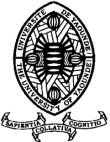Les Complications Postopératoires des Tumeurs Cérébrales en Réanimation Chirurgicale au Centre Hospitalier Universitaire Joseph Ravoahangy Andrianavalona d’Antananarivo
DOI:
https://doi.org/10.5281/hra.v1i1%20Jan-%20Feb-Mar.4693Abstract
RÉSUMÉ
Introduction. La chirurgie des tumeurs cérébrales est une chirurgie complexe et difficile dont les complications peuvent survenir en post opératoire et engagent le pronostic vital des patients. Ce travail a été réalisé pour évaluer les facteurs associés à la survenue des complications postopératoires. Patients et Méthodes. Dans une étude rétrospective et analytique, chez les patients post opérés pour tumeur cérébrale, pendant 72 mois allant de Janvier 2015 à Décembre 2020, dans le service de Réanimation Chirurgicale du CHU-JRA, la survenue des complications post opératoires a été étudiée. Le test de Chi² de Spearman a été utilisé pour l’étude de corrélation (Epi Info®.). Résultats. Parmi 110 patients opérés pour des tumeurs cérébrales, âgés de 40±15 ans, à prédominance masculine (sex ratio à 1,1), le taux de survenu des complications postopératoires dans notre étude était élevé (40%). Les complications neurologiques étaient le plus retrouvées (31,81%) de type détérioration neurologique (22,73%). Quatre facteurs étaient associés à la survenue de ces complications dont la présence d’hypertension intracrânienne en préopératoire (p0,001), l’effet de masse avec déviation de la ligne médiane au scanner cérébral (p=0,01), la longue durée d’intervention (p=0,006) et le réveil - extubation différée (0,001). Le taux de mortalité post opératoire était de 10,9%. Conclusion. Comprendre la physiopathologie d’apparition de ces complications permettra de mieux cibler les problèmes les plus coûteuses et les plus néfastes. Ces données fournissent un point de départ pour développer des paradigmes d'amélioration des soins des patients neurochirurgicaux en réanimation.
ABSTRACT
Introduction. Brain tumor surgery is a complex and difficult surgery whose complications can occur postoperatively and engage the vital prognosis of the patients. This work was performed to evaluate the factors associated with the occurrence of postoperative complications. Patients and Methods. In a retrospective and analytical study, in patients post operated for brain tumor, during 72 months from January 2015 to December 2020, in the Surgical Intensive Care Unit of the CHU-JRA, the occurrence of postoperative complications was studied. The Spearman Chi² test was used for the correlation study (Epi Info®.). Results. Among 110 patients operated for brain tumors, aged 40±15 years, predominantly male (sex ratio 1.1), the rate of occurrence of postoperative complications in our study was high (40%). Neurological complications were the most common (31.81%) and included neurological deterioration (22.73%). Four factors were associated with the occurrence of these complications, including the presence of preoperative intracranial hypertension (p0,001), the mass effect with deviation of the midline on the brain scan (p=0,01), the long duration of the operation (p=0,006) and the delayed awakening - extubation (0,001). The postoperative mortality rate was 10.9%. Conclusion. Understanding the pathophysiology of the development of these complications will allow better targeting of the most costly and harmful problems. These data provide a starting point for developing paradigms to improve the care of neurosurgical patients in the ICU.
Downloads
Published
How to Cite
Issue
Section
License
Authors who publish with this journal agree to the following terms:
- Authors retain copyright and grant the journal right of first publication with the work simultaneously licensed under a Creative Commons Attribution License CC BY-NC-ND 4.0 that allows others to share the work with an acknowledgement of the work's authorship and initial publication in this journal.
- Authors are able to enter into separate, additional contractual arrangements for the non-exclusive distribution of the journal's published version of the work (e.g., post it to an institutional repository or publish it in a book), with an acknowledgement of its initial publication in this journal.
- Authors are permitted and encouraged to post their work online (e.g., in institutional repositories or on their website) prior to and during the submission process, as it can lead to productive exchanges, as well as earlier and greater citation of published work










